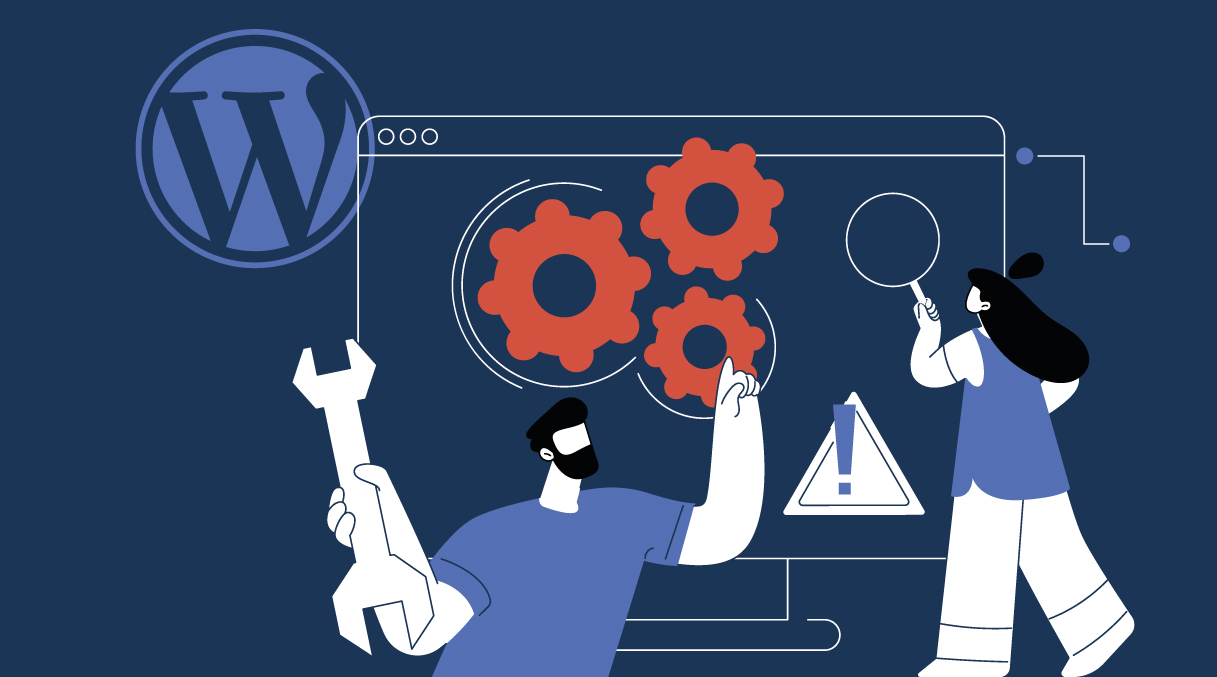WordPress Maintenance is Crucial for Security and Performance, WordPress is one of the world’s most popular content management platforms (CMS), powering millions of websites, from personal blogs to large corporate sites. Ease of use, flexibility and the wide range of plugins and themes available are some of the main reasons for this popularity. However, along with these advantages comes the need to keep WordPress and its components up to date at all times.
WordPress maintenance is not just good practice, but a necessity to ensure the security, performance and continued functionality of your site. In this article, we’ll explore the importance of WordPress maintenance, the risks associated with going out of date and the best practices to ensure that your site is always protected and running efficiently.
Benefits of Regular Updating
Security
Regular updates are essential to fix security vulnerabilities that can be exploited by hackers. WordPress and plugin developers release updates frequently to fix flaws and improve security. Keeping your site up to date is the first line of defense against cyber attacks.
Performance
Updates not only fix security problems, but also improve your site’s performance. This includes optimizations that can make your site faster and more efficient. Faster sites provide a better user experience and can even improve your positioning in search engines.
Compatibility
Plugin and theme developers also release updates to ensure compatibility with the latest version of WordPress. Keeping your site up to date ensures that all components work harmoniously, avoiding conflicts that could cause errors or site crashes.
New Features
WordPress updates often bring new features and improvements. By keeping your site up to date, you will have access to these new features, which can improve the functionality and user experience on your site.
Risks of Outdating
Security vulnerabilities
Outdating your WordPress site can leave it vulnerable to attack. Hackers are constantly looking for flaws in older versions of the software and plugins. Outdated sites are easy targets for attacks, which can result in data loss, theft of sensitive information and other serious problems.
Performance problems
Outdated sites can suffer from slowdowns and errors. Updates often include optimizations that improve site performance. Without these improvements, your site can become sluggish, negatively affecting the user experience and potentially resulting in a loss of visitors.
Plugin and theme incompatibility
Outdated plugins and themes may not work correctly with the latest version of WordPress, causing errors and conflicts. This can result in broken functionality and even site crashes.
Data loss
Errors and failures due to outdating can lead to the loss of important data. Without security updates, your site is more susceptible to attacks that can compromise the integrity of stored data.
Real examples of negative consequences
Cases of hacked websites
There are numerous documented cases of companies and individuals suffering attacks for not keeping their websites up to date. For example, in 2017, a vulnerability in the WP Statistics plugin allowed hackers to inject malicious code into thousands of outdated WordPress sites, resulting in significant data loss and reputational damage to the affected companies.
Financial Impact
The financial impact of a compromised website can be significant. In addition to repair and recovery costs, the loss of customer confidence can result in lost revenue. An IBM study in 2021 indicated that the average cost of a data breach was around 4.24 million dollars, highlighting the importance of investing in your website’s security.

Best Practices for WordPress Maintenance
Setting up automatic updates
An effective way to ensure that your site is always up to date is to set up automatic updates. WordPress allows you to activate automatic updates for the core, plugins and themes, minimizing the risk of going out of date.
Regular monitoring
In addition to automatic updates, it’s crucial to regularly monitor your site to ensure that everything is working properly. Tools such as the WordPress Site Health Check can help identify potential problems and areas that need attention.
Regular backup
Before carrying out any updates, it is essential to make a full backup of your site. This ensures that, in the event of problems during the update process, you can restore your site to its previous state without losing important data.
Tools and resources
Security and Update Plugins
We recommend using plugins such as Wordfence or Sucuri Security to monitor your site’s security. Plugins such as Easy Updates Manager can help you manage automatic updates efficiently.
Educational Resources
Keeping up to date with the best security and maintenance practices is crucial. Specialized blogs, online courses and tutorials can provide valuable information. Some recommended resources include the official WordPress blog, WPBeginner and Udemy courses on WordPress maintenance.
WordPress maintenance is crucial to ensuring security, performance and functionality. Regular updates protect against vulnerabilities, improve performance, ensure compatibility and bring new features. Ignoring these updates can result in serious security risks, performance problems and data loss. Implementing good update practices and using the right tools can help protect your site and ensure that it works efficiently.
Useful Links
- Official WordPress Blog
- WPBeginner
- Sucuri Security
You can also read:
Why WordPress is the Best Choice for Your Business
Improve your WordPress Site Speed
Written by: André Caridade
Learn more about our maintenance and support plans at https://horizonwp.io/#plans.



